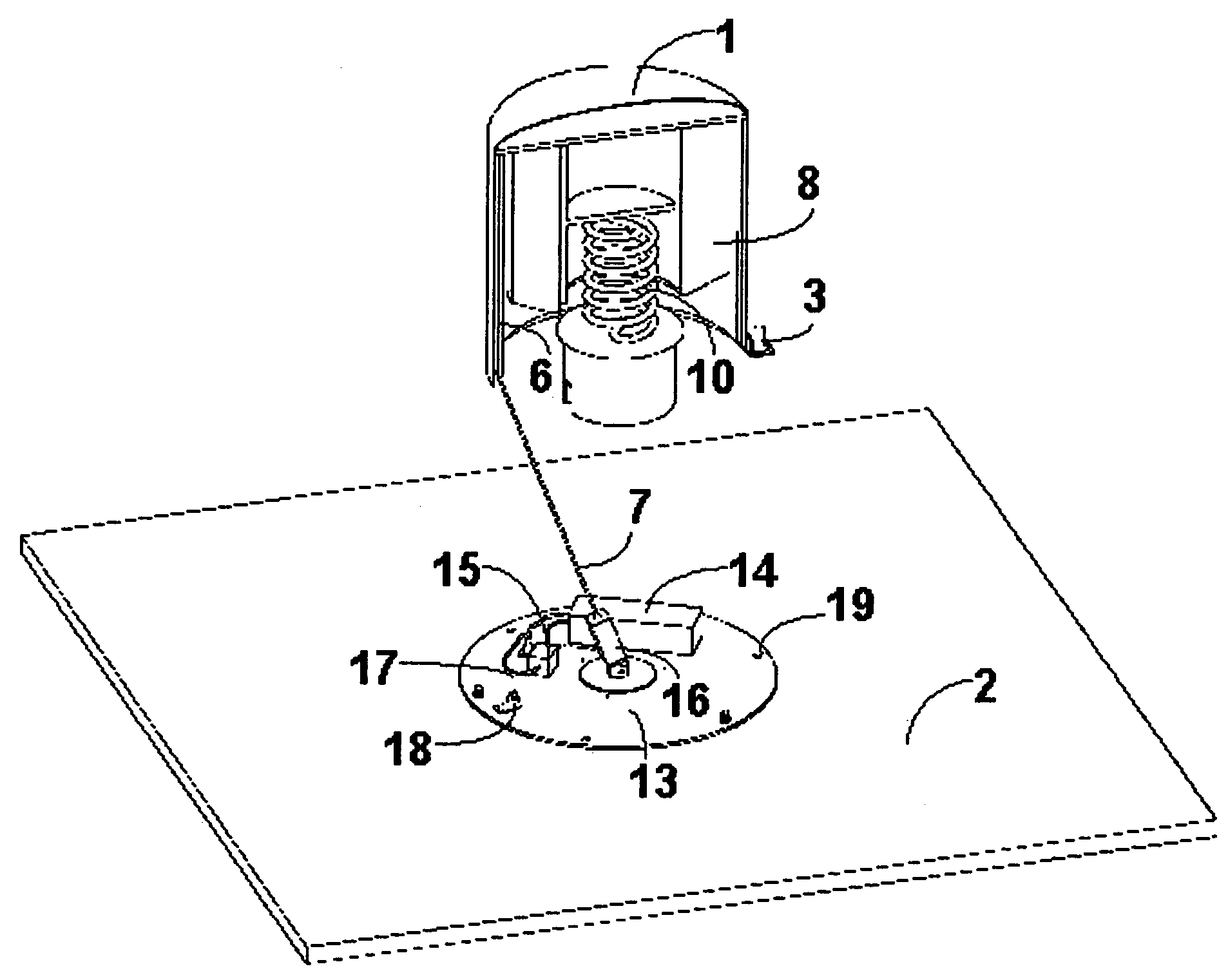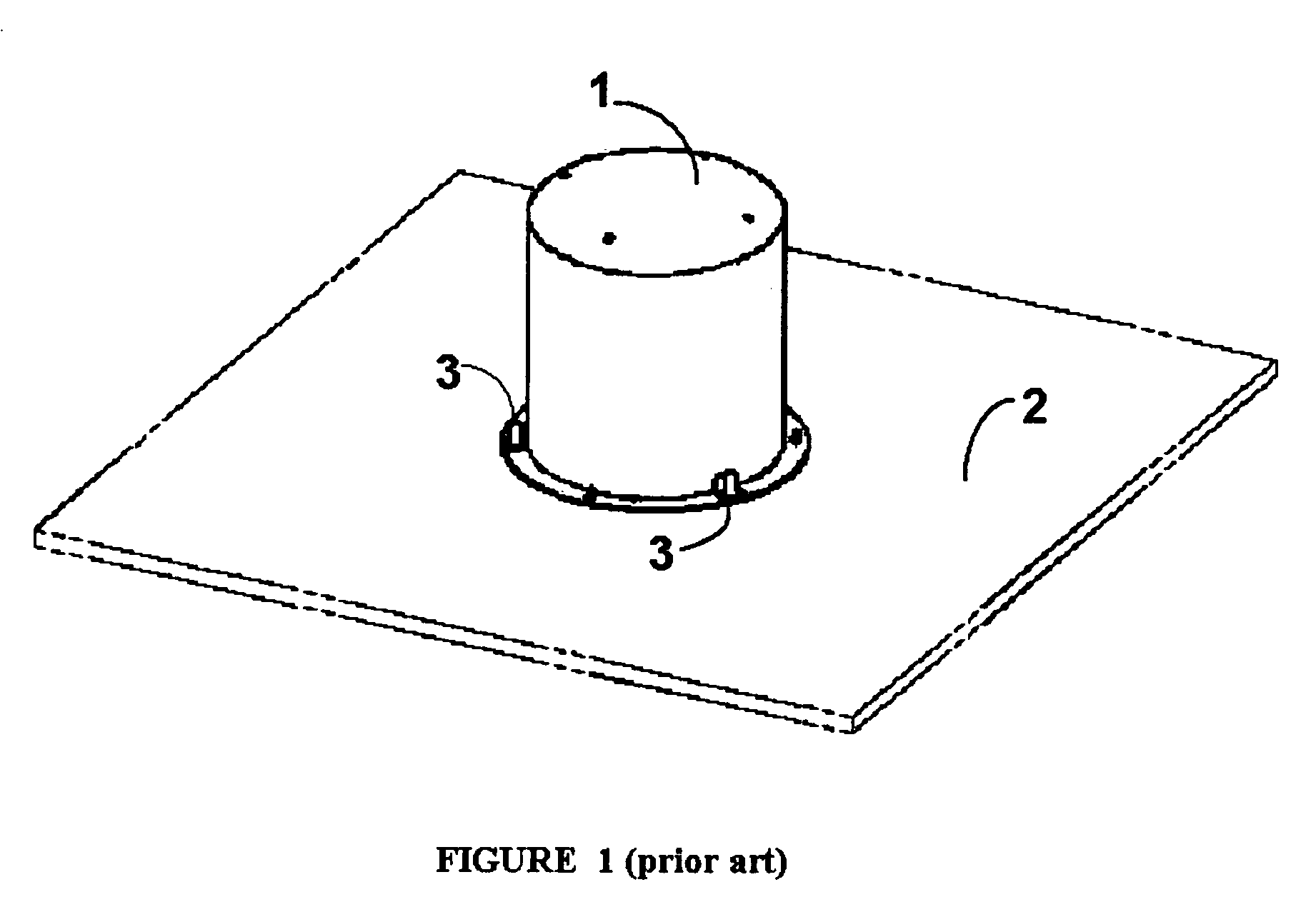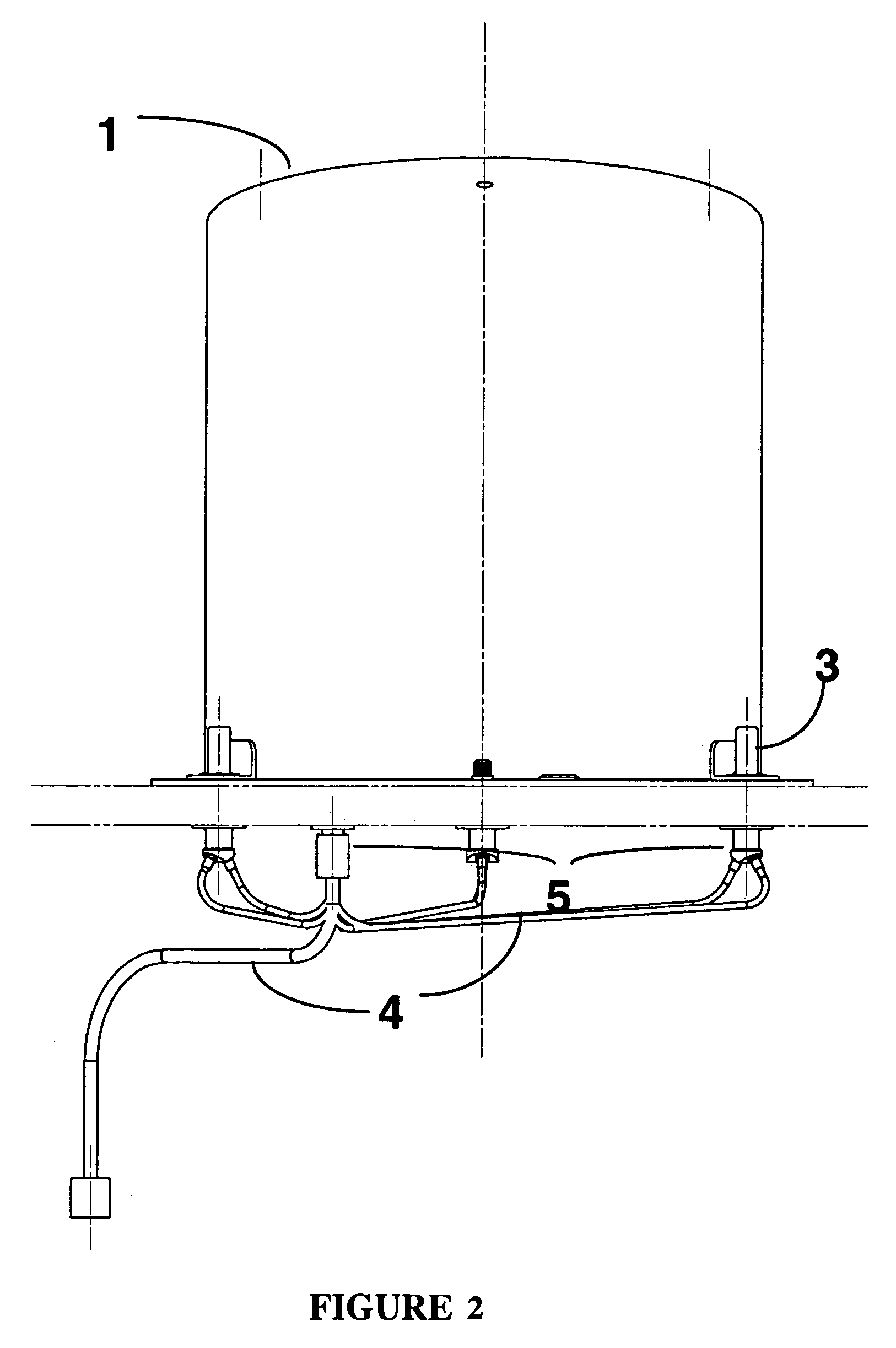Passive deployment mechanism for space tethers
a technology of space tethers and passive deployment, which is applied in the direction of space vehicles, transportation and packaging, aircrafts, etc., can solve the problems of high deployment friction force, rather strong mechanical complications, and slow orbital change, and achieve the effect of low friction force and minimal complexity
- Summary
- Abstract
- Description
- Claims
- Application Information
AI Technical Summary
Benefits of technology
Problems solved by technology
Method used
Image
Examples
Embodiment Construction
[0038]The mechanism described here may be fitted onto a satellite bus with minimum mass, complexity and cost, as it limits the number of tether deployment mechanism components to a minimum, while minimising the risk of failure. Minimum electrical and mechanical or structural interfaces are required, as also shown in FIGS. 2 and 4.
[0039]In the mechanism described here, the impulse for the separation and starting of the on-orbit tether deployment is provided by a simple system illustrated in FIG. 3, with a spring 10 accommodated at the centre of the fixed tether spool 8 and attached to it by a mechanical interface plane 11. When the deployer cover 1 is freed by the simultaneous actuation of the (three) pyro-bolts 3 through a suitable ground command, the central separation spring is freed at one end and hence imparts the planned impulse to the tethered deployer mass and transforms its stored energy in form of kinetic energy of the tethered masses.
[0040]As shown in FIG. 4, after the act...
PUM
 Login to View More
Login to View More Abstract
Description
Claims
Application Information
 Login to View More
Login to View More - R&D
- Intellectual Property
- Life Sciences
- Materials
- Tech Scout
- Unparalleled Data Quality
- Higher Quality Content
- 60% Fewer Hallucinations
Browse by: Latest US Patents, China's latest patents, Technical Efficacy Thesaurus, Application Domain, Technology Topic, Popular Technical Reports.
© 2025 PatSnap. All rights reserved.Legal|Privacy policy|Modern Slavery Act Transparency Statement|Sitemap|About US| Contact US: help@patsnap.com



